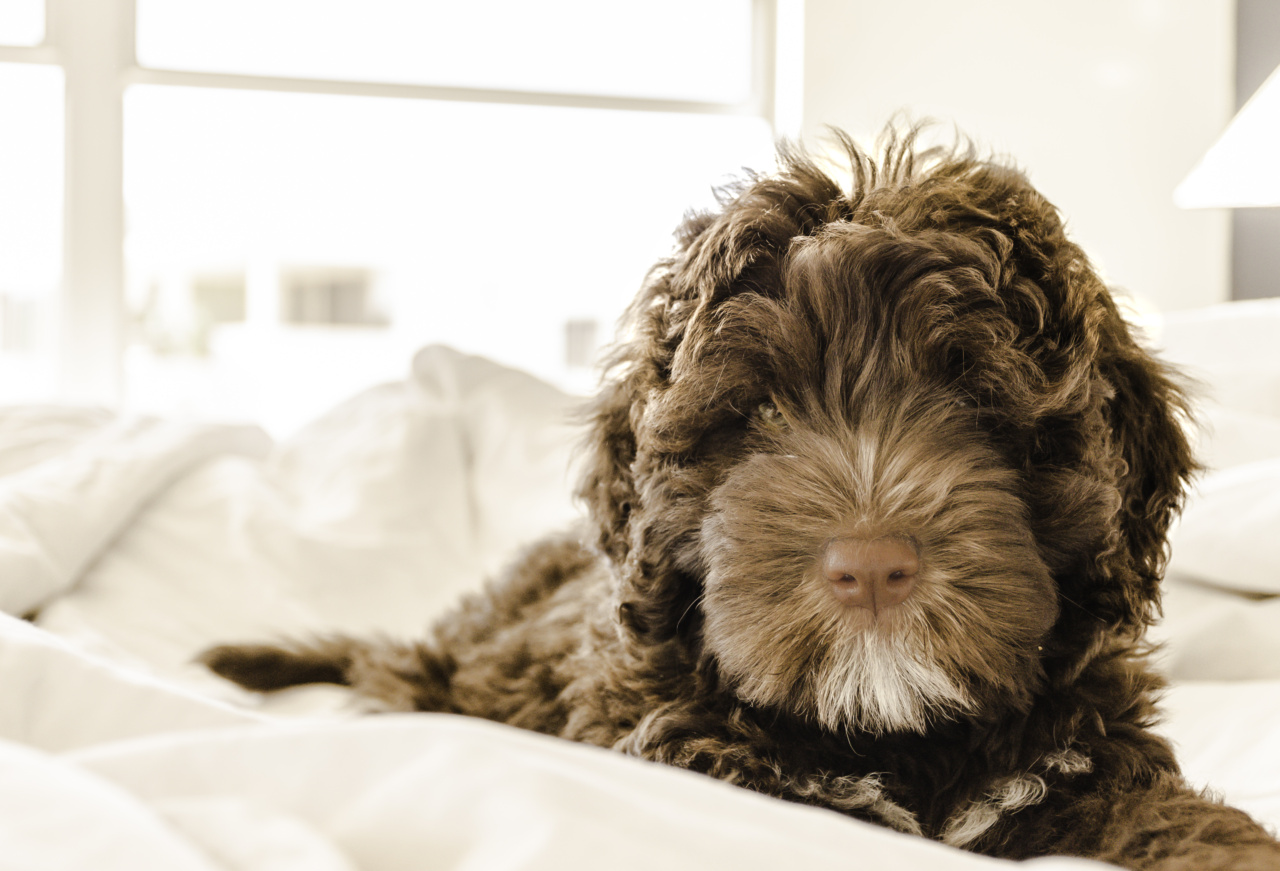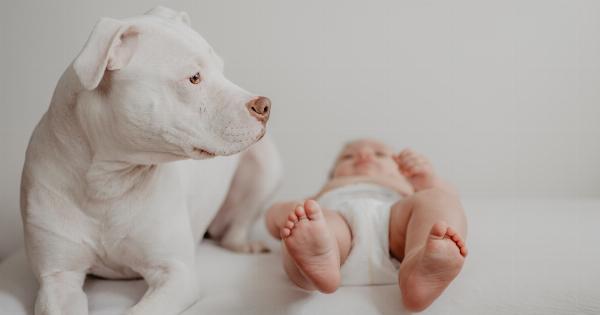Preparing your dog for the arrival of a new baby is an essential step to ensure a smooth transition for your furry friend. Just like humans, dogs thrive with proper introductions, training, and attention.
By following the right steps and guidelines, you can help your dog adjust and create a harmonious environment for everyone in the family.
1. Gradual Introductions
Introducing your dog to a new baby should be done gradually to avoid overwhelming them. Start by associating the new baby with positive experiences.
Allow your dog to sniff the baby’s clothes or items, rewarding them with treats and praise for calm and relaxed behavior.
Gradually increase the exposure by introducing your dog to the sounds and movements associated with a baby. You can play recordings of baby sounds or use a stroller to simulate a baby’s movements.
Reward your dog for remaining calm and relaxed during these simulated situations. This gradual exposure can help your dog adjust to the new sights and sounds they’ll encounter when the baby arrives.
2. Establish New Boundaries
Prior to bringing your baby home, it’s important to establish new boundaries for your dog. This includes setting limits on where your dog is allowed in the house and ensuring they have their own designated space.
Prepare a comfortable dog bed or crate in a quiet area where your dog can retreat to when they need alone time.
It’s also crucial to teach your dog that certain areas, such as the nursery or the baby’s crib, are off-limits.
Use positive reinforcement training techniques to help your dog understand these boundaries and redirect their attention to appropriate areas or toys.
3. Reinforce Basic Obedience Training
Ensuring your dog has solid basic obedience training is crucial when bringing a new baby into the home.
Brush up on commands such as “sit,” “stay,” “leave it,” and “down.” This will help you maintain control over your dog’s behavior, especially when your attention is divided between the baby and the dog.
Make it a point to practice obedience training sessions regularly, rewarding your dog for good behavior. This will not only help reinforce their training but also provide mental stimulation and help them feel included and valued in the family.
4. Encourage Positive Associations
Creating positive associations for your dog with the presence of the new baby can help them adapt more easily.
Associate the baby with pleasant experiences by giving your dog treats, praise, or special attention during times when you are caring for the baby.
Ensure your dog doesn’t feel neglected and reinforce positive behavior by involving them in activities such as walks or playtime with the baby present.
These positive associations will help your dog see the baby as a positive addition to the family.
5. Gradually Increase Interaction
As your dog becomes comfortable with the sights, sounds, and scents of the baby, gradually increase their interaction. Start by allowing your dog to sniff the baby while closely supervising the interaction. Reward your dog for calm and gentle behavior.
Progress to supervised petting sessions, always keeping a close eye on your dog’s body language. If your dog shows signs of stress or discomfort, redirect their attention to a positive activity or give them a break.
It’s important to prioritize the safety and well-being of both your dog and the baby during these interactions.
6. Maintain Routine and Attention
It’s vital to maintain your dog’s routine and give them dedicated attention, even with the new baby in the picture.
Dogs thrive on consistency, and sudden changes in their routine or lack of attention can lead to anxiety or undesirable behavior.
Set aside time each day specifically for your dog, whether it’s going for walks, playing, or training sessions. This helps your dog feel secure and ensures they don’t feel neglected.
7. Sensitize your Dog to Baby Noises
Before the baby arrives, expose your dog to common baby noises such as crying, cooing, or babbling. Play recordings of these sounds at a low volume and gradually increase the volume over time.
Pair the sounds with positive experiences for your dog, such as playtime or treats.
This process will desensitize your dog to the noise and help them remain calm and relaxed when the baby is making similar sounds.
It’s important to note that each dog is unique, and some may take longer to adjust than others, so be patient and consistent with the process.
8. Prepare for Changes in Your Dog’s Behavior
With the arrival of a new baby, it’s common for dogs to exhibit changes in behavior. They might become more anxious, protective, or even show signs of jealousy. It’s crucial to be prepared for these changes and address them promptly.
Consult with a professional dog trainer or behaviorist if you notice any concerning behaviors that hinder your dog’s adjustment to the new family dynamics.
They can help you develop strategies and techniques to manage and correct such behavior effectively.
9. Supervise Interactions
Until you’re confident in your dog’s behavior and their ability to interact appropriately with the baby, it’s important to supervise all interactions closely.
Always be present when your dog and baby are in the same room and never leave them unsupervised, even if you believe your dog is well-adjusted.
Supervision allows you to intervene or redirect your dog’s attention if necessary, ensuring the safety and well-being of both your dog and the baby.
Gradually give your dog more freedom as they demonstrate consistent calm and gentle behavior around the baby.
10. Seek Professional Help if Needed
If your dog continues to struggle with the new baby despite your best efforts, don’t hesitate to seek professional help. Professional dog trainers or behaviorists can provide personalized guidance and advice specific to your dog’s needs.
These experts can assess your dog’s behavior and help you develop a training plan tailored to their temperament and any specific challenges they may be facing.
With their assistance, you can address any issues promptly and ensure a harmonious environment for your growing family.
By following these preparation steps and investing time and effort into your dog’s adjustment, you can create a safe and happy environment for both your new baby and your furry companion.
Remember that each dog is unique, so be patient and adapt these tips to suit your dog’s individual needs. With proper introductions, training, and attention, your dog will become a loving and protective friend to your new addition!.


























